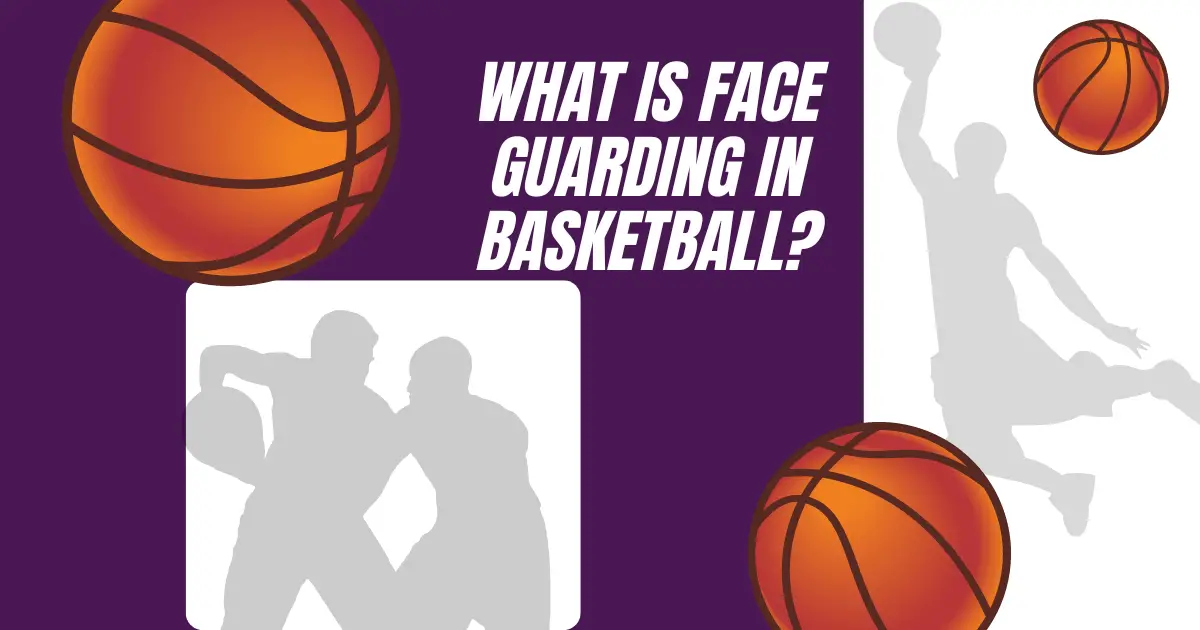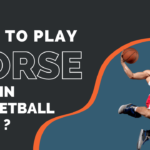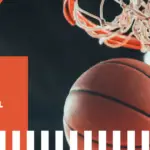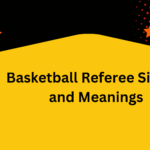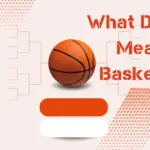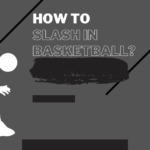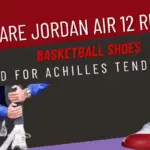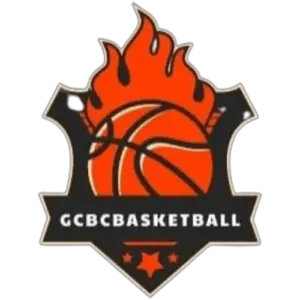Face guarding meaning:
Face guarding is a defensive technique used in basketball to deny an offensive player the opportunity to receive a pass. It involves physically obstructing the view of the offensive player so they cannot see the ball or their teammates, making it difficult for them to score. This technique has become increasingly popular as an effective way to limit an opponent’s ability to score. As with all defensive strategies, there are strict rules governing what players can and cannot do when face-guarding.
Basketball Rules For Face Guarding An Opponent
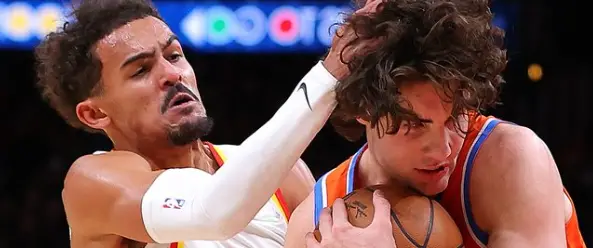
Is face-guarding legal in basketball?
NBA Face guarding is legal as long as it doesn’t involve physical contact or impede movement. However, there are rules put in place by basketball governing bodies such as USA Basketball and FIBA that aim to protect players from overly aggressive face-guarding techniques.
These rules state that defenders cannot block opponents’ paths with their hands, arms, legs, or body, nor can they impede an opponent’s progress with physical contact or dangerous movements. Furthermore, guards must pay attention to opponents who do not have the ball and can be called for fouls if they fail to give them enough space on the court while face-guarding.
Benefits Of Face-Guarding

Face Guarding allows defenders to keep track of their opponents without giving them too much energy or attention. By using face-guarding, defenders can be more mindful about watching where other offensive players are moving and anticipate plays ahead of time.
Drawbacks Of Face-Guarding

One potential downside of face-guarding is that it puts much strain on the defending team’s players. The defender must remain focused for extended periods, with minimal breaks between possessions, which can lead to fatigue and mistakes from exhaustion.
If the face guarder gets out of position or loses focus for just one moment, then the offense has a chance to make easy scoring opportunities. This could cause frustration among players who expect their defense to keep up tight coverage all game long.
Face-Guarding Drill:
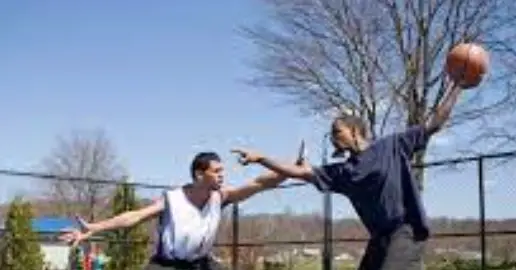
The face-guarding drill begins with one player playing offense and the other playing defense. The offensive player should attempt to move around the court and post up for open shots, while the defensive player should focus on staying in front of their opponent at all times. As they move around the court, both players should practice pivoting, changing directions quickly, and keeping their arms outstretched to block any potential passes or shots taken by the offense.
This drill helps improve defensive basics like footwork and body positioning against a live opponent rather than just a stationary target. Players can develop crucial skills for successful defense during game-time scenarios by practicing face-guarding through this drill.
How Do You Beat Face-Guarding In Basketball?
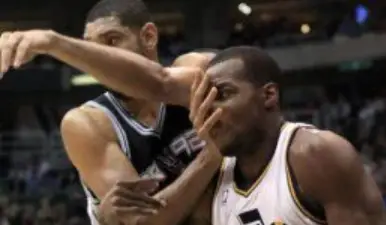
The key is using quickness and creativity. Offensive players should seek opportunities to create separation from their defenders by using head fakes, jab steps, and change-of-pace dribbling. This will give them enough space to move toward the basket or even pull up for an open jump shot.
Face guarding is a very effective way to slow down an opponent, but it can also put pressure on the defense because they are left completely vulnerable if their man breaks free.
How Do You Score When Face Guarded?
To score when faced with face guarding, the key is to outsmart your opponent and keep them on their toes. Using feints, misdirection passes, and quick cuts, you can put your defender off balance and create opportunities for yourself or your teammates. You should also look for ways to draw contact against your defender; this may lead to fouls or free throws that will help add points to the board.
Is Face-Guarding Legal In High School Basketball?
It is legal in high school basketball, though there are limitations on how it can be used.
The National Federation of State High School Associations (NFHS) defines face guarding as “making contact with an opponent without the ball while partially or completely turning the back to him/her and preventing that player from following through with the natural motion of playing defense”.
While this strategy is allowed, using excessive contact against another player can result in a technical foul which could lead to ejection from the game.
FAQs
What is a box out in basketball?
A box out in basketball is a technique used by a player to position themselves between an opposing player and the basket to secure a rebound. When a shot is taken, a player will “box out” by turning their body towards the opponent, then using their back and arms to block and keep them away from the ball.
How to get past an aggressive defender in basketball?
Getting past an aggressive defender in basketball can be done in a few ways. One method is to use fakes or feints to misdirect the defender. Another is to improve your dribbling skills, particularly changing speed and direction quickly. Practicing one-on-one moves like the crossover, behind-the-back, and spin moves can also help. Lastly, using screens set by teammates can create space to bypass the defender.
Conclusion:
Face-guarding is an effective strategy for both offensive and defensive players in basketball. It allows players to keep defenders away from the ball, creating space for an offensive player to make a shot or pass, and it also can be used to prevent a defender from stealing the ball. Face guarding requires quickness, agility, and an understanding of the court’s position.


Clyde Jackson III is a basketball coach and the founder of GCBC Basketball, a basketball-related learning and informational website that focuses on helping young players develop their skills on and off the court. With over 15 years of coaching experience, Clyde has worked with players of all ages and skill levels, from beginners to professionals.

